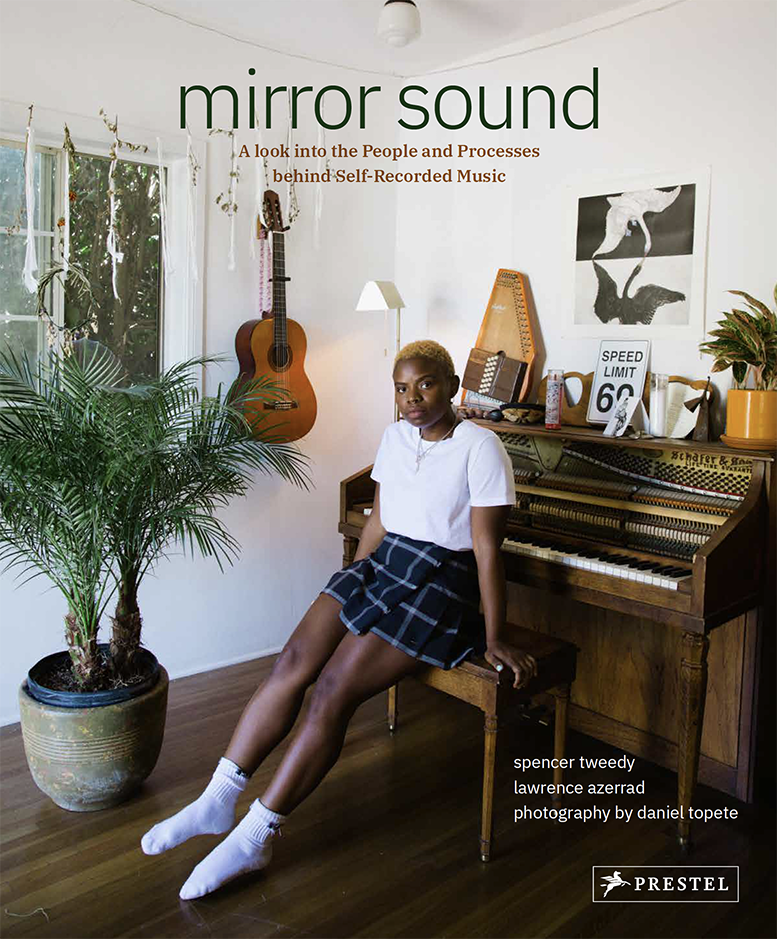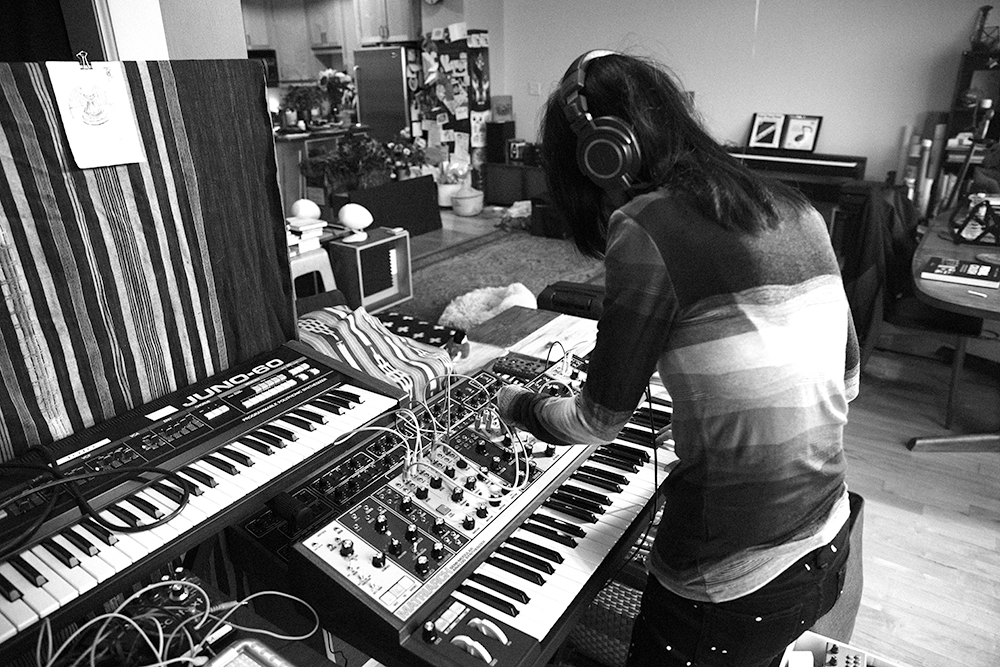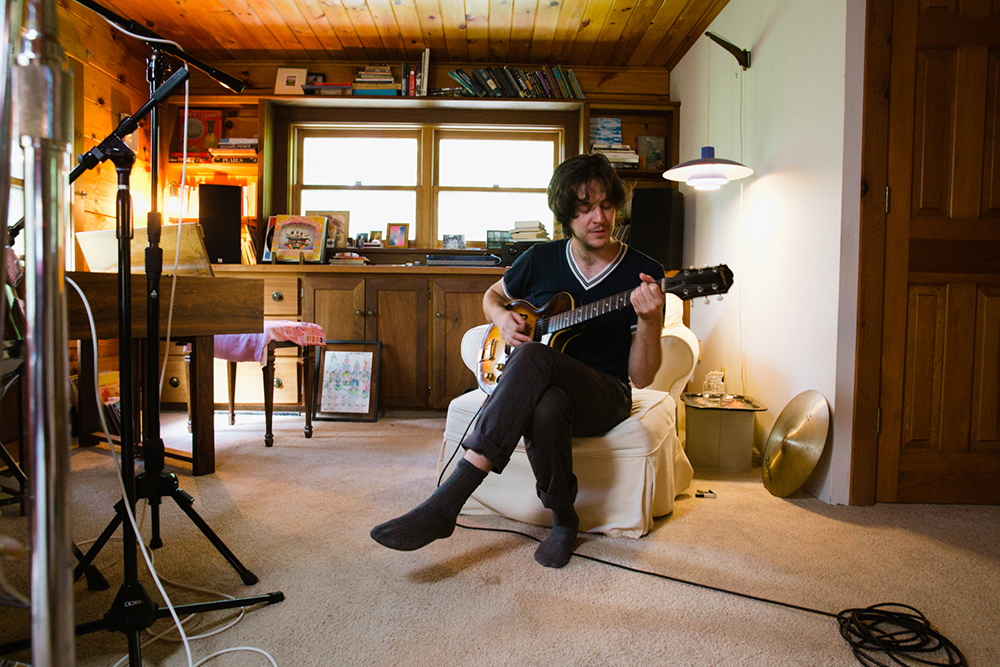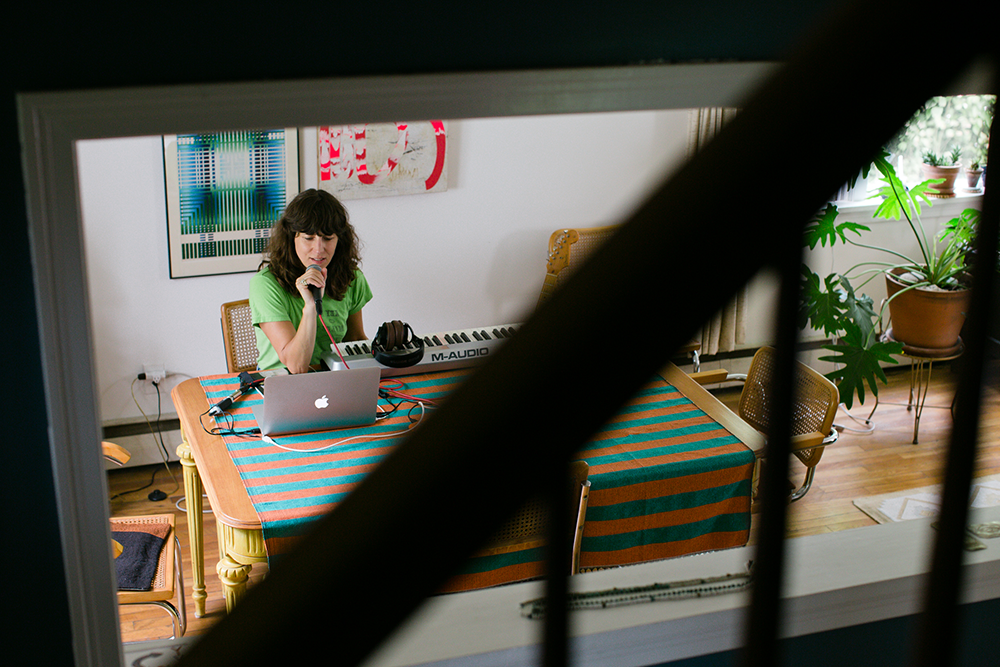
Join us on October 22 for our next Design Observer Studio Sessions when we discuss design + music with Mirror Sound designer and editor Lawrence Azarrad and photographer Daniel Topete.
So much has been said in the past nine months about our upended lives as many of us shelter in our homes. Our most private spaces have become public. This great inversion—the video-chat revealing of our living rooms and kitchens and bedrooms—gives colleagues and coworkers, people who normally wouldn’t be at home with us, a look at who we really are and who we wish to be. We’ve come to understand that the solace and sanctuary of our personal creative spaces have a way of shaping how and also what we create.
The late great Sir Terence Conran famously said that “If our homes should provide anything, they should provide a sense of who we are and how we got here, a sense of connection balanced by a sense of direction and progress.”
Conran’s statement is proven to be quite true in the book Mirror Sound: A Look into the People and Processes behind Self-Recorded Music.

Mirror Sound was built by musician Spencer Tweedy, designer Lawrence Azerrad, and the incredible photographer Daniel Topete. Through interviews and visits to the private studios of some of the biggest names in music today, as well as pioneers of recording, Mirror Sound delves into the people making music on their own terms. The project is about providing a rare look into the private spaces that foster invention, laboratories for challenge, realms of personal exploration, and the spectrum of musicians that thrive within them. In exploring the havens of twenty-seven musicians including Sharon Van Etten, Laetitia Tamko (Vagabon), Bradford Cox, Suzanne Ciani, Mac DeMarco, the late Emitt Rhodes, NNAMDÏ and Tune-Yards we begin to see how our environments influence our creativity.
In the book’s foreword Carrie Brownstein of Sleater-Kinney and Portlandia writes, “This book is also about a fundamental reimagining of ourselves and the spaces in which we create and invent…. It’s not that the recording studio got smaller, it’s that the bedroom became bigger. Not literally, but in the way privacy itself has collapsed, the way we collectively perceive intimacy as a public offering.”

In seeing the environments visually—the artists’ ecosystems—we learn that their worlds and habitats are as important as the gear they use and their methodologies. Daniel’s photos so artfully capture more than just a mere space but also a sense of the soul, vibe, and in some cases, maybe even the smell of being there. This works to underscore the fact that there truly is an umbilical cord between sound and vision, and seeing the environments that music is made in, can provide a deeper understanding of the music overall.

We had the privilege and honor of including artists from a broad spectrum of musical styles, gender, age, race, and geography, who worked in just as wide a range of spaces: big, fully stocked studios, laptops in tiny bedrooms, basements, garages, cultural clubhouses, splendid rural hideaways., Through all our travels a key thread emerged. Namely, as important as it is to climb and master the technical hills of creative work it’s just as important, if not more, to direct our skills with a sense of curiosity, openness, and will. In these self-recording musicians there’s an itch to push what is possible, a trust in facing risk, and an intention to share the outcome with others. It was heartening to see shared words and patterns emerge on why and how we create. This throughline showed us that deep down (creatively speaking), artists of all disciplines may be more similar than we are different.

In some instances, it can be hard to tell whether an artist’s environment molds her life, or whether the artist’s life molds her environment. It seems, in fact, that both statements are true. Since the early 1990s Suzanne Ciani has composed and created legendary synthesizer music from her cliffside home above the Pacific north of San Francisco. Suzanne’s proximity to the ocean puts her in touch with waves, a constant inspiration and thread throughout her career. Her debut album, Seven Waves (1982), imitated the ocean so faithfully that listeners were sure she had used sample recordings. “People still think those are real waves. It’s like, noooo, I designed my waves on the Buchla . . . and every wave had a specific personality,.” she told us. However, long before establishing the seaside studio, through the 1970s and 80s Suzanne lived a varied and active composer’s life in New York City. Something on the coast of California—something about the ocean and its rhythmic waves—called Suzanne back to it. We choose to change our environments—to pack up and move across the country—and our environments change us in turn. Yet wherever an artist works—in ocean grotto or New York City den—our workspaces define how we work, logistically and emotionally. Suzanne explains, “I didn’t like having a studio where I needed [another engineer] just to power it up. It was so big . . . I’m always happiest in my intimate space in my home and my home has always had a kitchen next door.”

Mirror Sound is an examination of creating in isolation, without being alone. How our homes, in their capacity to offer solitude, foster the discovery, the incubation, and maturation of creative ideas. And eventually, how the resultant work can spark wonder in others. We get a look at the kind of spaces that foster creative trust. It's a glimpse of inspiration and solace that we could use in all of our homes these days.
More information about Mirror Sound and a link to purchase it is available at https://mirrorsoundbook.com/. To join in the discussion, register here.
